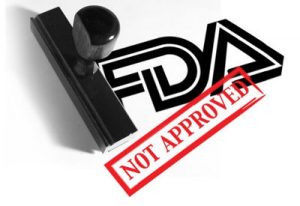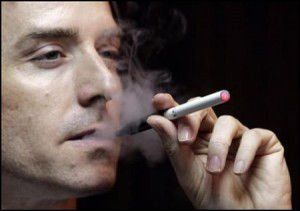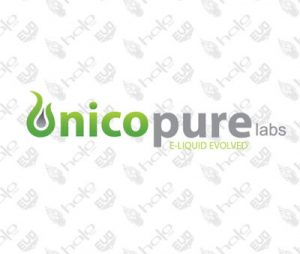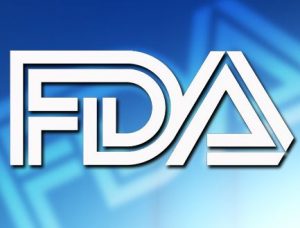FDA Releases Deeming E-Cigarette Regulations and They Are as Bad as We Feared
The US Food and Drug Administration released its long-awaited e-cigarette regulations last week, and they are just as stringent as we had feared. The agency claims that this new set of rules will help protect public health, but many experts agree that it will only put 99% of e-cigarette companies out of business, send millions of vapers back to smoking and leave whatever is left of the vaping market in the hands of Big Tobacco. You know, the guys selling the deadliest consumer product in human history.
 Last week, the FDA finally announced that it will be asserting regulatory authority over electronic cigarettes and several tobacco products including cigars. We all knew it was coming, and despite all the signs pointing to a devastating outcome, somehow we all hoped everything would be ok in the end. It isn’t. Contrary to all the scientific evidence showing that e-cigarettes are a less hazardous alternative to smoking and an essential tool in smoking cessation, the FDA decided to treat them much worse than it does combustible cigarettes, which we all know are killing millions around the world every year.
Last week, the FDA finally announced that it will be asserting regulatory authority over electronic cigarettes and several tobacco products including cigars. We all knew it was coming, and despite all the signs pointing to a devastating outcome, somehow we all hoped everything would be ok in the end. It isn’t. Contrary to all the scientific evidence showing that e-cigarettes are a less hazardous alternative to smoking and an essential tool in smoking cessation, the FDA decided to treat them much worse than it does combustible cigarettes, which we all know are killing millions around the world every year.
The 499-page document (available for download here) deems e-cigarettes to be tobacco products despite the fact that they contain no tobacco, subjects them to extensive regulatory requirements and effectively forces manufacturers to lie to consumers about their products, by forbidding them to tell the truth.
1. Premarket Tobacco Application
The Premarket Tobacco Application (PMTA) requirement has been the most controversial aspect of the FDA’s regulations, even prior to its final ruling. Every product released after the grandfather date of February 25th, 2007 must go through a burdensome and costly approval process in order to remain on the market once the regulations come into effect. This applies not only to vaping devices, but also to e-liquids and individual components like tanks, batteries, digital displays and even the programmable software of a vaporizer. The Agency estimates that the PMTA for a single product will cost around $330,000, but many analysts believe the cost will surpass the $1 million mark.
But let’s assume that the FDA’s estimate is accurate. $330,000 is a lot of money, but keep in mind that every vaping device and e-liquid is considered a separate products according to the deeming regulations, so manufacturers must submit applications for each. So if an e-liquid company makes 10 different flavors in three nicotine flavors, it would have to submit 30 applications, and pay $9.9 million. And that’s the most optimistic estimate. How many small businesses do you think can afford such costs?
But we’re just getting started. In order to even hope for a positive outcome to their Premarket Tobacco Application, manufacturers must provide scientific evidence that the product is beneficial to public health. They will have to demonstrate that the products is both safer than cigarettes and an effective smoking cessation tool, AND that the benefits of smoking cessation will not be outweighed by the uptake of the product, including youth. How anyone can do all that, I can’t even imagine. You can be certain that it involves lots of expensive lab tests and scientific studies.
According to the deeming regulations, the FDA must decide on a PMTA within 12 month of the application filing. Should the Agency not meet the deadline and issue a marketing order, the manufacturer will have to pull the product from the market. The Agency is currently sitting on thousands of applications for tobacco products filed over the last 5 years, so it’s hard to believe it will actually meet the deadline for e-cigarettes.
Theoretically, e-cigarette manufacturers have an alternative to the burdensome Premarket Tobacco Application. It’ s called the Substantial Equivalence Application and it allows companies to keep their product on the market without going through the PMTA, IF they can prove it is substantially equivalent to a product that was on the market before February 25, 2007. In case you weren’t vaping back then, that means the early cigalike e-cigs which some refer to as the dinosaurs of vaping. But it gets worse.
In a written reaction to the FDA regulations, the Vapor Technology Association claims that the Agency admits that it has identified only ONE products that may serve as a predicate for Substantial Equivalence applications, and that product is not currently publicly available for companies to use in filing their SE applications. And even if it were, it’s still a first-generation e-cigarette that can’t hope to fulfill the current needs of vapers. You know, the kind of product currently sold by tobacco companies. What a surprise!
has identified only ONE products that may serve as a predicate for Substantial Equivalence applications, and that product is not currently publicly available for companies to use in filing their SE applications. And even if it were, it’s still a first-generation e-cigarette that can’t hope to fulfill the current needs of vapers. You know, the kind of product currently sold by tobacco companies. What a surprise!
Although vape shops will not be required to file PMTA applications – unless they mix their own e-liquids, at which
point they aren’t treated as vape shops anymore, but as manufacturers – they will also be forced out of business. Since they won’t be able to sell unapproved products, they’ll have no choice but to close down and send thousands of people into unemployment. Oh, and product sampling? You can kiss that goodbye as well when the new regulations come into effect.
So, is there anyway to prevent this disaster from happening. Well, yes and no. The House Appropriation Committee recently passed an amendment that would change the grandfather date for e-cigarettes from February 25, 2007, to the date the FDA regulations come into effect, August 10, 2016. This would mean that all products currently on the market could be sold without having to go through the PMTA process. The Cole-Bishop amendment is not law yet, though. The favorable vote just gives it the chance to go forward as part of an appropriations bill and be voted on in the House of Representatives. This is our only hope right now, so if you care about the future of vaping, get in touch with your Congress representatives and ask them to support the Cole-Bishop amendment.
But even if a miracle happens, and the amendment becomes legislation, there is still the issue of innovation. Vaping technology has come a long way since e-cigarettes first hit Western markets, and the potential for innovation is infinite, but because of this grandfather date, any advancements will automatically trigger the need for a PMTA application. The FDA is effectively trying to stifle innovation in the industry and getting away with it.
2. Modified Risk Claims
Last year, an expert independent review commissioned by Public Health England (PHE), an agency of the UK’s Department of Health, found electronic cigarettes to be 95% less harmful than combustible cigarettes. Last week, the Royal College of Physicians released a 200-page report stating that vaping “can prevent almost all harm from smoking” and improve the lives of millions of smokers. These are not claims made by manufacturers and vendors, but conclusions drawn by public health experts based on existing scientific evidence. But the FDA doesn’t want the American public knowing any of this.
As of August 10, 2016, e-cigarette and e-liquid manufacturers are forbidden from making any modified risk claims about regarding their products. This means they will not be allowed to inform customers that vaping is safer than smoking, describe their products as “smoke-free alternatives”, or even mention that e-cigarettes DO NOT CONTAIN TOBACCO and produce no smoke, or that the levels of potentially hazardous substances is much lower in exhaled vapor than in cigarette smoke, or absent altogether. It basically means that manufacturers must ignore current scientific evidence and lie to their customers to obey the law…
 As Dr. Michael Siegel of Tobacco Analysis notes, “while a company could apply to be allowed to make a modified risk claim, the regulations make it extremely unlikely that a successful application could be developed. To make a claim that e-cigarettes are safer than real cigarettes, one would most likely have to conduct or cite relevant human studies demonstrating long-term benefits of the product. This would be a time-consuming and cost-prohibitive process that could only be conducted by the very largest of the manufacturers.”
As Dr. Michael Siegel of Tobacco Analysis notes, “while a company could apply to be allowed to make a modified risk claim, the regulations make it extremely unlikely that a successful application could be developed. To make a claim that e-cigarettes are safer than real cigarettes, one would most likely have to conduct or cite relevant human studies demonstrating long-term benefits of the product. This would be a time-consuming and cost-prohibitive process that could only be conducted by the very largest of the manufacturers.”
The requirements for making a reduced exposure risk claim are even more preposterous. To be able to say that their product contains lower levels of a certain carcinogen, or that they are smoke-free, manufacturers first have to show that consumers will not interpret this to mean that the product is safer than cigarettes. Does that make any kind of sense? It does if you consider the possibility of the FDA trying to protect tobacco companies.
The FDA did propose some sensible regulations, as well, but they pale in comparison with the above hack job. Under the new rules, e-cigarette sales would be prohibited to anyone under the age of 18, vendors would have to conduct age verification by photo ID, and vending machine sales – except in adult-only establishments – would be banned.

















Welcome to my world This was always going to happen, and for those that didnt pay attention to the quality of their product and everything that comes with leveraging from someones else’s hard work especially when the factory “your” using for your products had absolutely nothing to do with you, nor were you ever really aware of the conditions when placing your OEM/MOQ order to see you through, People always think that their being hard done by when they do nothing to protect their path or any of the work that makes the difference, If anyone thinks that the manufacturers had no influence to improve their Facility-Standards or step up product and Ops ISO standards to where “some” are today your dreaming, if your reading this and you’ve have no input you don’t care and your just another Guru talking smack on how to vape and how Big Your Clouds are that’s cool but while there’s a limited few crew out there not all known to the world in the industry because they’ve been busting their arse to make a real difference, before D-Day had everyone locked on and in sight. When you try and help people and they don’t want to know about it,Only to come back wanting to know specifics all of a sudden and how to answer questions regarding evidence etc Its time to back someone that’s been backing you, without so much as hearing a peep out of them…”Us”, because it’s what we do. The Bustered Arse Vaping crew from Way out West DownUnder,I’ve been Dealing and Doing this for way too long to the point we’ve invested “Everything” lost vaping Trademarks innovative designs promotional marketing strategies,All while waiting on our specific standards to be passed before launching any product, having trusted a few Operators not to expose or share trade secrets while operating under the same roof as international competition with Big-T’s and Little-D’s are being offered our designs and proposed innovative improvements as quick as a fart in a fan factory as if they were their own..
So you think your being hard done by you have No idea of The Early Stage Challenge’s that I’ve been faced with and the constant battle with New “”Educated””Professionals” That think they’ve been EnVapored over night to envaporidge everyone on their hairbrain ideas Or the Actipests that have never lived in the real world had a job outside HSP=TVDx.052/D or ever seen the outside of a classroom, Lecture or Lab.
I need a Vape…!
B.P South of the Boarder
Telling Vaping How It Is.
Did You Feel That Throat Hit..